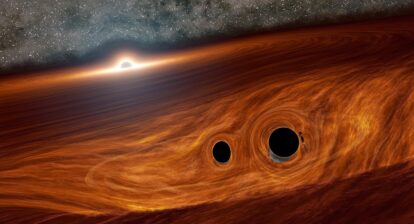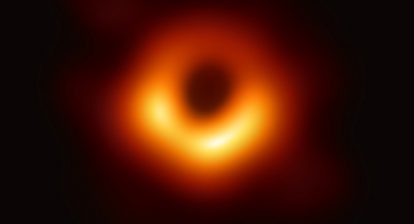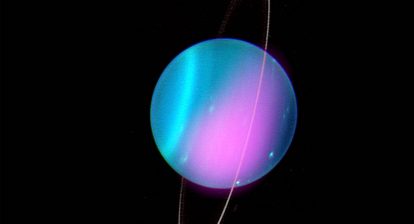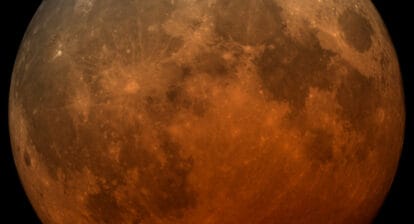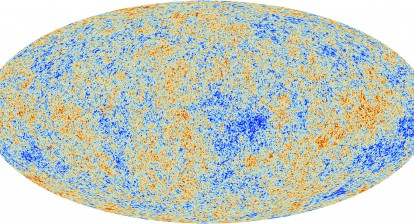Black holes are big, bad and amazing. And they can shred a star to pieces – as this cool animation from the Deutsches Elektronen-Synchrotron (DESY), a particle accelerator lab in Hamburg, Germany shows.
An unlucky star came too close to a supermassive black hole (as massive as 30 million suns), residing at the centre of its home galaxy, in the constellation The Dolphin (Delphinus). It was ripped apart by the black hole’s enormous gravity – in an event known as a stellar tidal disruption event (TDE). Such events are quite rare, according to NASA, occurring once every 10,000 years in a typical galaxy, when a star is thrown toward a black hole after interacting with another massive object. When the star gets close enough to the black hole, it gets stretched and gobbled up (in a process called spaghettification).
“The force of gravity gets stronger and stronger, the closer you get to something. That means the black hole’s gravity pulls the star’s near side more strongly than the star’s far side, leading to a stretching effect,” explains DESY scientist Robert Stein. “This difference is called a tidal force, and as the star gets closer, this stretching becomes more extreme. Eventually it rips the star apart, and then we call it a tidal disruption event. It’s the same process that leads to ocean tides on Earth, but luckily for us the moon doesn’t pull hard enough to shred the Earth.”
According to NASA, usually the black hole consumes only 1% of a star’s mass and throws out most of the matter into space in the form of immense jets that shoot out from its central region.
This animation depicts our black hole flinging away about half of the star’s debris into space, while the other half started swirling around it in a disc. This is what is known as an accretion disk, and before it falls past the event horizon and gets gobbled up by the black hole, the matter in the accretion disk gets hotter and hotter, shining brightly as it does so. You can see various optical phenomena in the video as the massive gravity of the black hole takes action.
The whole system shone brightly across many wavelengths and scientists think it produced glowing jets, perpendicular to the accretion disk.
This glow was first detected on April 9, 2019 by the Zwicky Transient Facility (ZTF) – a robotic camera at Caltech’s Palomar Observatory in Southern California. Then on October 1, 2019 the U.S. National Science Foundation’s IceCube neutrino detector at the South Pole registered an extremely energetic neutrino from the direction of this tidal disruption event.
“It smashed into the Antarctic ice with a remarkable energy of more than 100 teraelectronvolts,” says co-author Anna Franckowiak from DESY. “For comparison, that’s at least ten times the maximum particle energy that can be achieved in the world’s most powerful particle accelerator, the Large Hadron Collider at the European particle physics lab CERN near Geneva.”
Catching sight of this neutrino is a remarkable event because usually such lightweight neutrinos hardly ever interact with other objects, passing through stars, planets, walls and even us. This is the first time a neutrino has been linked to the TDE and only the second time, a high-energy neutrino has been traced back to its source. In 2018, an active galaxy, the blazar TXS 0506+056, was the first ever identified source of a high-energy neutrino, recorded by IceCube in 2017.
This latest observation points to the existence of powerful engine at the centre of the accretion disk, spewing out these fast particles. Analysis of data from radio, optical and ultraviolet telescopes provides evidence that TDEs act as humungous particle accelerators.
The cool thing is that this neutrino left the black hole around 700 million years ago and while other particles spewed out by the TDE are deflected by intergalactic magnetic fields, it is only the electrically neutral neutrinos that travel in a straight line and can be observed from Earth (like light).
“The combined observations demonstrate the power of multi-messenger astronomy,” says co-author Marek Kowalski, head of neutrino astronomy at DESY and a professor at Humboldt University in Berlin. “Without the detection of the tidal disruption event, the neutrino would be just one of many. And without the neutrino, the observation of the tidal disruption event would be just one of many. Only through the combination could we find the accelerator and learn something new about the processes inside.”
We can look forward to finding many more associations between high energy neutrinos and their sources in the future, with new generation of powerful telescopes from across the Earth and better neutrino detecting facilities.
Credit: DESY, Science Communication Lab (https://www.desy.de/news/news_search/index_eng.html?openDirectAnchor=2030)
References: A tidal disruption event coincident with a high-energy neutrino; Robert Stein, Sjoert van Velzen, Marek Kowalski, et al.; Nature Astronomy, 2021, DOI: 10.1038/s41550-020-01295-8
A concordance scenario for the observed neutrino from a tidal discruption event; Walter Winter and Cecilia Lunardini; Nature Astronomy, 2021, DOI: 10.1038/s41550-021-01305-3
